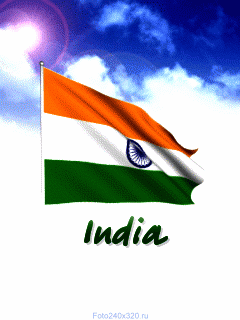National Flag of India - symbol of our sovereignty
The national flag of a country is the symbol of
a free nation. Like national anthem, every free
country in the world has its own national flag.
Our country, India, also has its own national
flag. It is referred to as 'Tiranga', meaning
tricolour. Indian National Flag is horizontally
designed tricolour strips of deep saffron, white
and green with a navy blue Ashok Chakra with 24
equally spaced spokes in the middle.
The present national flag of India was adopted
during a meeting of the Constituent Assembly
that took place on 22 July 1947. At that time it
became the official flag of the Dominion of
India. Later it was identified as the flag of
the Republic of India. The flag is based on the
concept of 'Swaraj' and was designed by Pingali
Venkayya. At that time the saffron and green
strip were used to honour the two major
religions of India, Hinduism and Islam. Later a
white band was added in the centre with a
spinning wheel in the middle to show respect to
both the religions.
The blue Ashok Chakra and each colour in the
Indian National Flag have its own
significance and meaning. The uppermost saffron
colour signifies renunciation and devotion. The
white colour in the centre represents peace and
harmony. The green colour at the bottom
symbolises youth and energy. The Ashoka Chakra
or the Wheel of Ashoka denotes courageousness
and peace.
All the designing specifications and
manufacturing processes are looked after by the
Bureau of Indian Standards. Our national flag is
always made from khadi cloth, which is a special
hand-spun cloth, first introduced by Mahatma
Gandhi.
During the British rule in India, our tiranga
was quite frequently used by different freedom
fighters in several rallies and protest marches
against the British Empire. It used to induce a
feeling of patriotism and unity among the Indian
masses. It is for this reason many people have
laid down their lives in order to preserve and
uphold the dignity of our Indian National
Flag. The same is true in the present age as
well. Indians continue to have the same respect
and love for the tricolour as during the British
rule.
However, there are certain irresponsible
citizens who tend to dishonour the national flag
by using it in some improper ways and also for
their own selfish gains. For instance, at the
end of the cultural programmes during the
Republic Day or the Independence Day, some
people are seen throwing the national flag on
the ground and walking over it. It is for this
reason the Government of India has introduced
certain laws such as Prevention of Improper Use
Act, 1950, Prevention of Insults to National
Honour Act, 1971, etc. to avoid such
circumstances and duly punish the culprits.
I strongly believe that public awareness on how
to honour the national flag is very important.
The practice of using paper flags during
national events, tying them on a string and
hanging them from pole to pole should either be
banned or proper care taken to bring them down
with equal honour.
According to the Flag Code of India 2002,
when a flag is damaged or soiled it should be
"destroyed as a whole in private preferably by
burning or by any other method consistent with
the dignity of the flag". Paper flags should
also be disposed of in a similar manner.
As responsible citizens of India, we students
should always give our best in safeguarding the
pride and honour of our Indian National Flag.
Jai Hind!!
© Arked Infotech 2015



